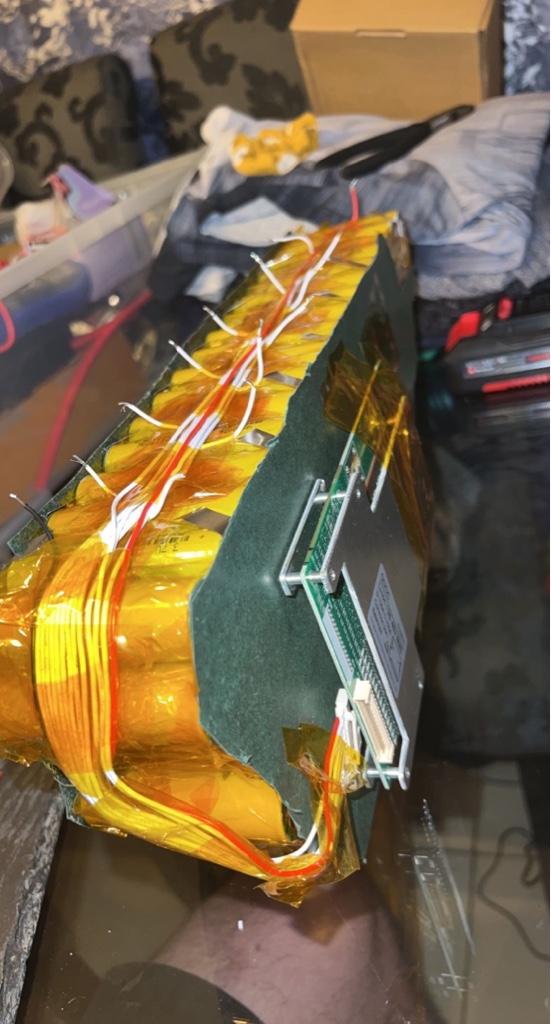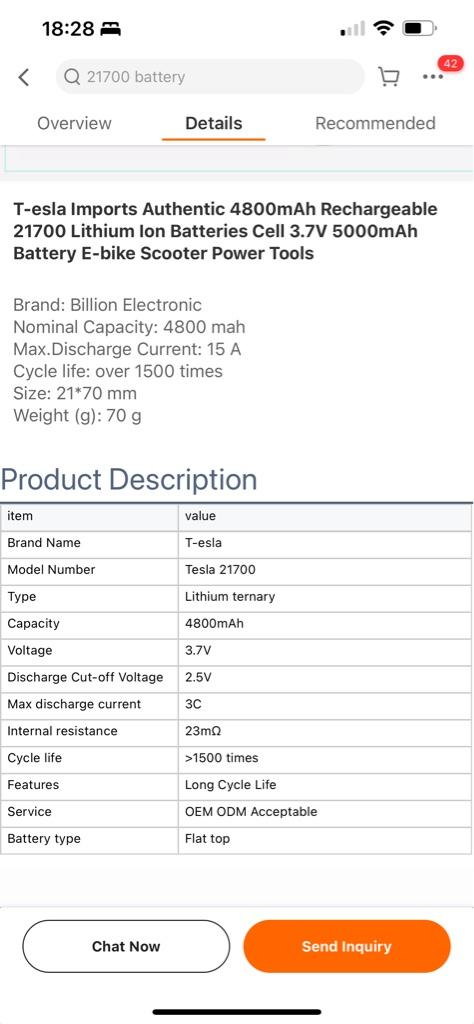DefconExile said:
Ok I’m definitely going to have to pick one of those up because my bms is balancing at 20-30mah. Hopefully it’s a case of being badly balanced from the get go and progressively worsening under load and cycles. Maybe I’ll also need too choose a better bms with more balancing capability or opt for a separate balancing module as I’m worried once evenly charged the problem will re occur on the next charge as the bms didn’t originally do it’s job when all cells were at 3.65v
A few points, some of which may not be applicable to your pack, but put here for future readers looking for pack troubleshooting info:
Most BMS don't do any balancing until they are above some point, usually close to full voltage for each cell (group); typically these are "shunt" or "resistive" balancers, that simply drain excess voltage above some point. Some are programmable, most are not.
Some BMS use active balancers that transfer Ah from higher-SoC cells into the lower-SoC ones. If these balancers operate continuously, they can keep a pack with a worse problem better balanced than a passive resistive balancer type, even if they have a lower balancing current capability. If they only work during charging, you'd still have to have it connected to the charger to do the balancing, just like a resistive type.
However (though I haven't seen this yet), if they don't have some limitation on how much capacity they can transfer or how far they can drain the fuller cells to fill the emptier ones, they can theoretically kill an entire pack dead, even though there's nothing broken about the BMS or balancer (where a resistive balancer has to be broken to kill cells, and can only kill the cells on the stuck-on balancers), if there is a leaky cell group that drains internally, it could cause the BMS to keep trying to fill it at the cost of all the other groups.
Some BMS don't have any balancers at all, and can't fix a problem once it starts (though they also can't kill cells by balancing them to death either

).
If your cells are well-matched, equal in capability and capacity, a BMS doesn't have to be able to shunt much balancing current per group, as it shouldn't have much work to do.
When a pack is as badly out of balance as yours, it indicates a potentially fairly serious problem with it. Which problem(s) it has, you'd have to test for to find out.
Note first that generlaly the highest voltage groups after charge shuts off are the lowest capacity (the same is true of the lowest voltage groups after discharge shuts off due to a low group). The highest voltage groups while charge current is flowing are the highest internal resistance (the same is true of the lowest voltage groups while discharge current is flowing).
The most likely problem is that the cells are likely to be badly matched, of varying capacities and capabilities between groups (and probably within groups as well, though you can't see that problem without breaking the cells in the same group apart from each other because they effectively act as one cell when paralleled). There can be various reasons for it, sometimes several are applicable at the same time, sometimes only one.
Sometimes the problem is just some bad cells, even just one in a group, that has an internal leakage problem that is constantly draining all the cells in parallel with it.
Sometimes the problem is faulty interconnects--some cells in a group are no longer connected to the others, so they no longer contribute to the pack in any way other than taking up space and making it heavier.
Sometimes it's that the cells are not even from the same batch, and weren't tested for matching properties before assembling into the pack.
Sometimes it's that the cells are actually recycled garbage cells, from scrapped packs, or defective batches, etc., that should have been recycled but were instead sold as new cells, or just collected by a pack manufacturer, etc., and
Sometimes it's a defective BMS, with a stuck-on resistive/shunt balancer. Even with a low (50mA or less) current, since it's draining that *all the time*, continuously, from that cell group, whether charging, discharging, or just letting it sit there, it can cause a severe imbalance that will grow worse with time: every hour a 50mA balancer drains 50mAh. In 10 hours that's 500mAh (half an Ah). In 100 hours (a few days) that's 5Ah. Etc.
DefconExile said:
I’ll have a little ride around the woods take it back and test the groups again and see if it’s possible that one group isn’t draining.
If you mean that one group isn't draining (discharging) while riding...that can't happen because they are in series. All seriesed groups (cells) discharge at the same current, same "rate".
They end up at different states of charge afterward because they have differing capabilities and capacities.
The only way to have a pack that stays at the same SoC for all groups during the entire charge and discharge cycle is to have groups that are all equal identical capabilities and capacities.
All balancing (top or bottom) does is make all cells the same *voltage*; it cannot make them the same capacity; that's intrinsic to the individual cells.




